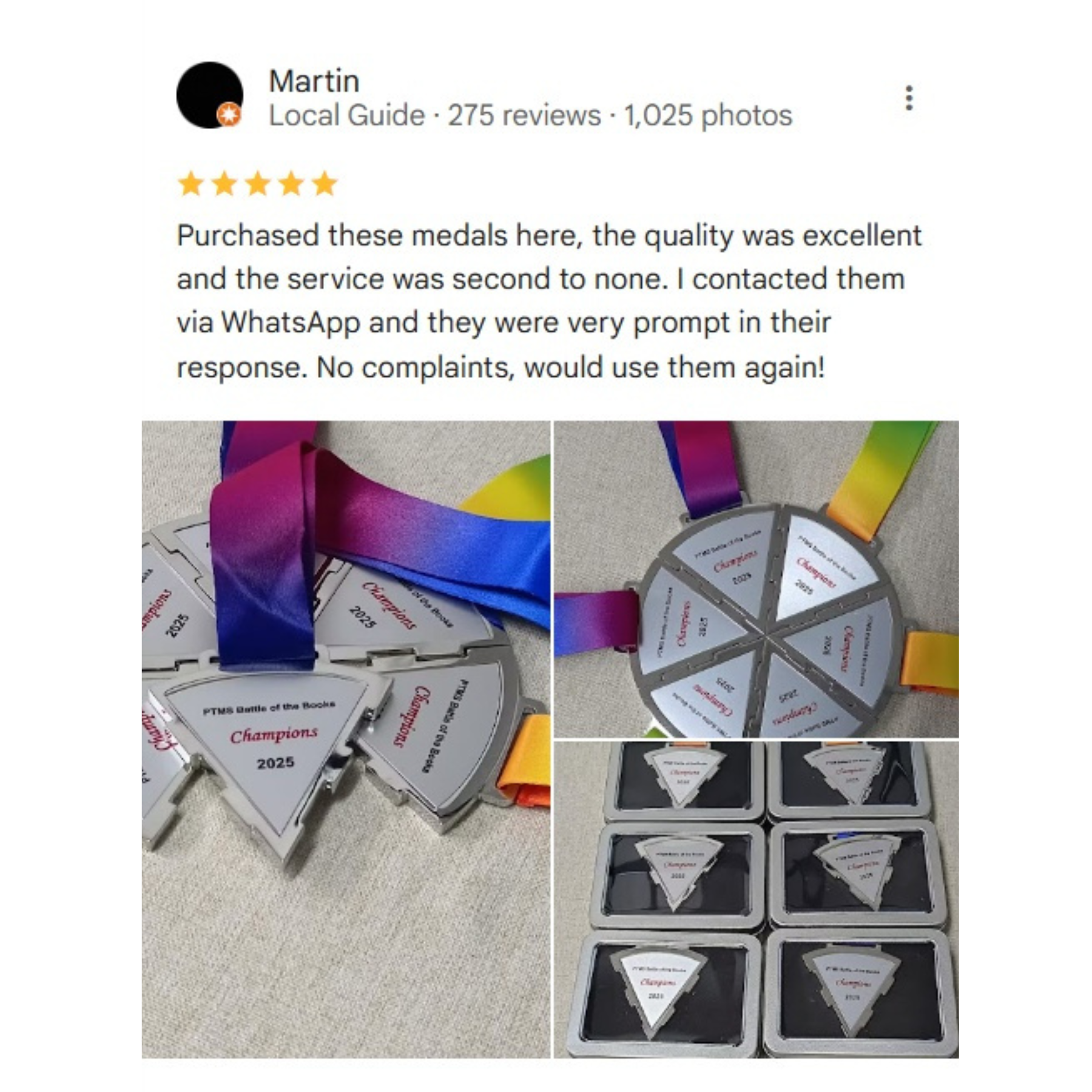Brand identity development is the foundation of how a business communicates its values, personality, and promise to the world. In today’s saturated market, standing out isn’t just about offering a good product or service - it’s about building trust and recognition through a well-crafted identity. If you’ve ever wondered why brand identity is important, the answer lies in its ability to shape perception, foster emotional connections, and distinguish your brand from the competition.
This guide will walk you through the essential components and actionable steps in brand identity development, giving you the tools to build a brand that truly resonates.
What is Brand Identity?
Brand identity is the collection of visual, verbal, and emotional elements that shape how people perceive a brand. It goes beyond a logo or tagline - it's the comprehensive image and voice a business communicates across all touchpoints.
In fact, research from Lucidpress shows that consistent brand presentation across all platforms can increase revenue by up to 33%. This underlines how important it is to create a well-defined identity that can be deployed uniformly across different customer interactions.
To better understand brand identity, it's essential to differentiate it from similar terms:
-
Brand refers to the business itself - its products, values, and market presence.
-
Brand identity is how the brand presents itself to the world.
-
Brand image is how the public actually perceives the brand.
Core Components of Brand Identity:
-
Visual Elements: This includes the logo, typography, color palette, and imagery that visually represent the brand.
-
Verbal Elements: These involve the tone of voice, messaging, tagline, and how the brand speaks to its audience.
-
Experiential Elements: This refers to how customers experience the brand - from packaging to customer service.
When these components align consistently, they contribute to a cohesive brand personality that customers can recognize and emotionally connect with. In turn, a strong brand identity can influence customer perception, enhance trust, and create long-term loyalty.
Core Elements of Brand Identity
Creating a brand identity involves more than just designing a logo; it requires aligning multiple components to convey a unified and compelling message. A well-developed brand identity integrates various visual, verbal, and strategic elements that reflect the brand's personality and purpose.
Crafting Effective Corporate Branding Solutions
When done thoughtfully, creating a brand identity can significantly influence how customers perceive and connect with a business.
1. Visual Branding
Visual branding encompasses every visual element a customer interacts with, from the logo on your website to the packaging of your products. It plays a critical role in shaping first impressions and establishing immediate recognition. When executed effectively, visual branding creates a cohesive and appealing aesthetic that communicates the brand's personality, values, and professionalism at a glance.
Research by Lama Lawand (ResearchGate) emphasizes that visual branding has a powerful influence on consumer perception and can significantly affect purchasing decisions. This finding reinforces the idea that every visual touchpoint - from design layout to color palette - is an opportunity to shape how your brand is viewed and remembered.
-
Logo: The centerpiece of visual identity. It should be distinctive, scalable, and relevant.
-
Typography: Font choices convey personality. For example, serif fonts feel classic, while sans-serif fonts are modern and clean.
-
Color Palette: Colors evoke emotions. Choosing the right palette can improve recall and emotional connection.
-
Imagery and Graphics: Consistent use of images or design elements reinforces the brand’s look and feel.
Tools like Canva and Adobe Creative Suite are widely used for building visual branding assets.
2. Verbal and Emotional Branding
The verbal identity of a brand defines how it speaks and emotionally engages with its audience.
-
Tone of Voice: Should reflect the brand’s values and appeal to its target audience.
-
Messaging: Clear, consistent messaging ensures the brand’s core values and mission are communicated.
-
Tagline or Slogan: A memorable phrase that summarizes the brand promise.
Strong storytelling techniques enhance emotional branding. Brands like Nike and Apple use inspiring narratives to build deep emotional resonance with their audiences.
3. Brand Guidelines
Brand guidelines are internal documents that ensure consistency across all platforms and mediums. They typically include:
-
Rules for logo usage, spacing, and positioning
-
Color codes and typography specifications
-
Voice and messaging standards
-
Image usage and examples
Having well-documented brand guidelines ensures that everyone involved in creating content for the brand adheres to the same standards, thereby preserving brand consistency across platforms.
4. Strategic Brand Positioning
Strategic positioning defines where your brand sits in the minds of your audience compared to competitors. It's the foundation of how you communicate your unique value.
-
Target Audience: Clearly define who your brand is for. Understanding their needs, preferences, and pain points will help shape a message that resonates.
-
Value Proposition: Articulate what makes your brand different and why customers should choose you over others.
-
Market Differentiation: Highlight the features, services, or experiences that are unique to your brand.
-
Brand Mission and Vision: Communicate long-term purpose and direction to give your brand a meaningful identity.

Without a solid strategic foundation, even the most visually appealing and emotionally resonant brand identities can fall flat. Positioning ties all elements together and ensures your brand stands for something specific in the minds of consumers.
Steps to Develop a Strong Brand Identity
Building a compelling brand identity requires intentional strategy, creativity, and consistency. Below are the essential steps to guide the development process:
1. Conduct Audience and Market Research
Start by understanding who your audience is and what your competitors are doing. Identify your target demographic's preferences, behaviors, values, and needs. Simultaneously, analyze how competitors position themselves and look for gaps or opportunities for differentiation.
2. Define Your Brand’s Core Values and Personality
Clarify what your brand stands for. What are its core beliefs? What tone or emotion should people associate with it? Defining your brand personality—whether it's bold and innovative or calm and trustworthy—will guide your tone, messaging, and design choices.
3. Design Visual Elements
This includes creating a logo, selecting a consistent color palette, defining typography styles, and establishing visual standards. These elements should reflect the personality and message of your brand, ensuring instant recognition across different platforms.
4. Develop a Distinctive Brand Voice
Craft how your brand will communicate with its audience. Is your tone playful, formal, inspirational, or authoritative? A strong brand voice ensures consistent messaging across website content, social media, email marketing, and more.
5. Document Everything in Brand Guidelines
Compile your visual and verbal elements into a brand guideline document. This ensures all teams, partners, and vendors represent the brand consistently, regardless of medium or campaign.
6. Implement and Monitor Across All Channels
Roll out your brand identity consistently across your website, social platforms, product packaging, and internal materials. Monitor feedback, measure audience engagement, and be prepared to refine and evolve as needed.
Common Mistakes in Brand Identity Development
Even well-intentioned brands can make critical errors during identity development. Here are some common pitfalls to avoid:
1. Inconsistent Branding
When branding elements vary across platforms, it confuses customers and weakens brand recognition. Always maintain consistency in visuals, messaging, and tone across all touchpoints.
2. Overemphasis on Logo Alone
While a logo is important, it's only one part of your identity. Focusing solely on the logo while neglecting messaging, tone, and customer experience leads to a shallow brand presence.
3. Ignoring Audience Insights
Failing to understand your audience’s needs and values can result in a brand identity that doesn’t resonate. Make research and feedback integral to the development process.
4. Lack of Flexibility
Brands that refuse to evolve may appear outdated. While consistency is key, it's equally important to adapt to changing trends, technologies, and customer expectations.
5. Superficial Storytelling
Using trendy buzzwords without an authentic narrative can make your brand seem insincere. Strong brands tell stories that are rooted in truth and aligned with their mission.
Avoiding these mistakes will help ensure that your brand identity is not only memorable but also meaningful and sustainable in the long term.
Conclusion
Brand identity development isn’t a one-time task—it’s an ongoing process that must evolve in alignment with your business growth and market dynamics. By understanding your audience, defining your values, crafting powerful visual and verbal elements, and executing with consistency, you create a brand identity that remains relevant and impactful over time.
Whether you're starting from scratch or rebranding an existing business, this guide to brand identity development will serve as a roadmap. A well-executed identity not only distinguishes your brand in a crowded marketplace but also builds stronger emotional connections with your audience.
Ready to bring your brand identity to life? Explore customizable branded products that align with your identity at Best Gift Hong Kong.























